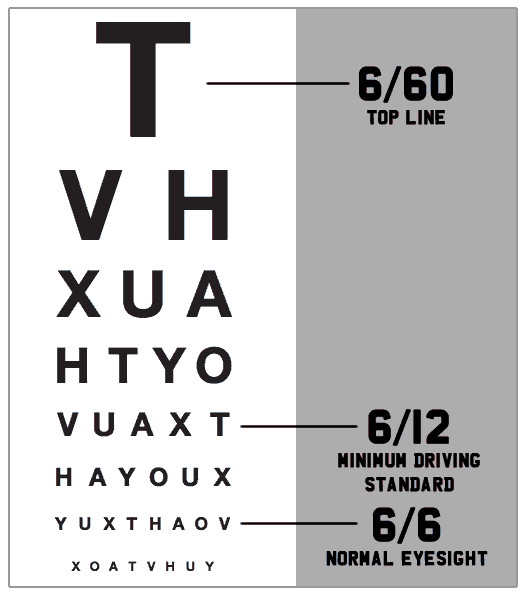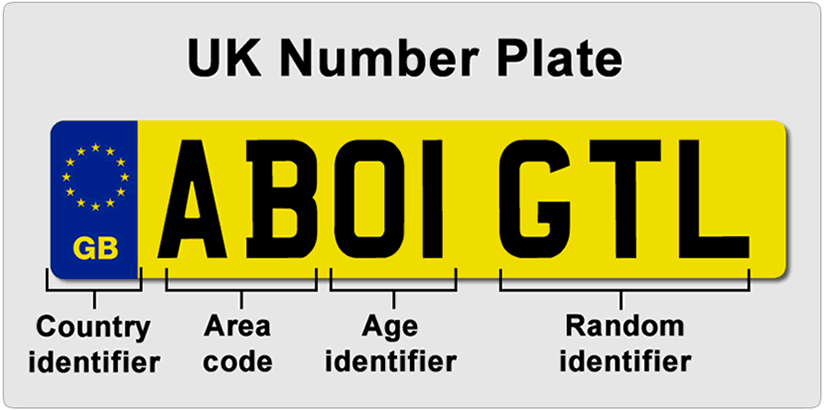Eyesight Test for Learning to Drive
Before taking to the road to start learning to drive, you need to ensure your eyesight is up to standard. As the driver, either learner or qualified, it’s your responsibility to ensure your eyesight is of a legal standard for driving on public roads.
Minimum Eyesight Requirements for Driving
The minimum eyesight requirements for driving is that the driver must be able to read a car number plate (on cars made after 1 September 2001) from a distance of 20 metres (66 feet), or roughly 5 car lengths.
It’s worth noting that this is the minimum legal requirements and due to the importance of having a good standard of vision for driving, it’s advisable to have your eyesight tested by a qualified optician before you start learning to drive.
In terms of professional eyesight testing where an optician requires you to read an eye chart (Snellen Scale) the minimum eyesight standard for driving requires the driver to have a visual acuity of at least decimal 0.5, or 6/12 with glasses or contact lenses if necessary.
Minimum Eyesight Driving Explained
Let’s consider the minimum eyesight visual acuity legally required for driving which is 6/12. The number ’12’ here represents a person with a normal visual acuity (normal being a visual acuity of 6/6, or commonly known as 20/20), who would be able to read a specific row of letters on an eye chart from a distance of 12 metres.
If you had a visual acuity of 6/12, your eyesight would be a little worse and you would be only able to read the same row of letters from a distance of 6 metres. So the ‘6’ represents your visual acuity and the ’12’ represents that of a person of normal visual acuity.

Driving with Defective eyesight and the Law
If you get caught driving without your glasses, you forgot to put your contact lenses in or your eyesight is generally poor, this is the procedure that the police go though.
The police may conduct sporadic eyesight checks on random drivers or if they suspect your level of driving is not up to standard, they may pull you over for various checks including an eyesight test.
The police conduct the same eyesight test as that of driving examiners on the practical driving test. You’ll be required to read a car number plate from a distance of 20 metres during the hours of daylight. If you fail the eyesight test and the officer suspects that you represent a hazard to other road users, they may contact the DVLA (Driver and Vehicle Licensing Agency) who in turn will immediately revoke your driving licence. This may incur a fine of up to £1000 along with three penalty points.
You’ll then be required to take an eyesight test and to have your eyesight corrected. If after correction your eyesight meets the minimum legal requirements for driving, you can then apply to the DVLA to have your licence reinstated. If in order to meet the minimum eyesight requirements for driving you were prescribed glasses or contact lenses by your optician, you must legally wear these while driving.
Penalties increase significantly if an accident occurs with the reason being due to defective eyesight. Depending on the seriousness of the incident, it’s possible to be charged with careless or dangerous driving and in serious instances, be sent to prison.
